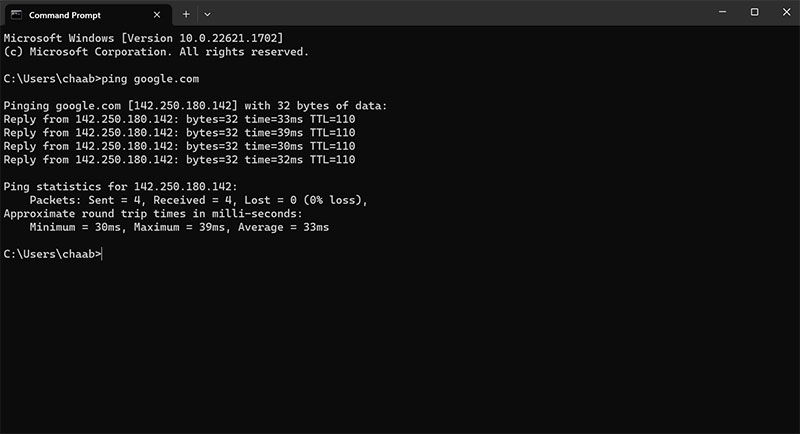Today we’re taking a deep dive into a topic you might not think about every day, but one that plays a significant role in our digital lives—data latency. Let’s unravel this techie term and see why it’s so crucial for your online activities.
Imagine you’re in a canyon and you shout, “Hello!” You’ll have to wait for a few moments before you hear your echo bounce back. That’s latency in a nutshell—the time it takes for your ‘Hello’ to travel across the canyon and back to your ears. But instead of sound waves bouncing off canyon walls, we’re talking about data traveling across the Internet to and from your device.
What Exactly is Data Latency?
Data latency is the time it takes for data to get from one point to another. In the context of the Internet, it’s the delay between when you click on a link or send a message and when the action is completed.
It’s measured in milliseconds (ms), so when we’re talking about ‘high’ or ‘low’ latency, we’re really discussing how many tiny fractions of a second it takes for data to get where it’s going.

Low Latency vs. High Latency
Low latency means data is moving quickly.
High latency means data is moving slowly.
Think of it like this: if you’re in a race, you want to have the ‘lowest’ time—that means you’re the fastest! Similarly, on the Internet, low latency is the goal. It means your online games run smoothly, your video calls don’t freeze, and your websites load quickly.
On the other hand, high latency can make your Internet activities feel like taking forever. It’s like being stuck in a traffic jam while low latency is whizzing by in the express lane.
How Does Latency Impact Everyday Activities?
Video Calls and Streaming
Ever been in a video call where everything freezes at the most embarrassing moment? (Just between us, we’ve had this exact issue while interviewing 😅) Or maybe you’re streaming your favorite show, and it buffers right at the climactic scene. These frustrating occurrences are often due to high latency. When the data takes too long to travel, your video can’t stream smoothly, leading to interruptions, buffering, and yes, frozen faces.
Online Gaming
For gamers, latency is the invisible enemy. Ever been caught off guard in a game because your character didn’t respond quickly enough? That’s latency at work. In fast-paced online games where every millisecond counts, high latency can mean the difference between victory and defeat. When your commands take too long to register, you’re always a step behind the action.

And while you’re here, check out this exciting list of the most anticipated video games of 2023. Who knows, maybe you’ll find your next disappear-for-days game in there.
E-commerce and Online Transactions
If you’ve ever clicked ‘Buy Now’ and ended up with three blenders because the site didn’t update your cart quickly enough, you’ve felt the impact of latency on e-commerce. High latency can slow down transactions, create confusion, and lead to errors in order processing. It can also frustrate customers, leading to abandoned carts and lost sales.
Business Operations
Beyond just consumer experiences, latency can also affect businesses in more profound ways. It can cause hiccups in supply chains by delaying updates to inventory databases.
Communication can be slowed, impacting everything from customer service to project coordination. In industries where real-time data is crucial—like finance or cybersecurity—high latency can even lead to lost opportunities and security risks.
Are you looking for business level internet to support your operations? Check out Galaxy Broadband, they provide a host of business internet solutions that also service remote and rural areas.
How Can You Measure Latency?
So, how can you test the latency of your own Internet connection? One quick and easy way is by running a ‘ping’ test. ‘Ping’ is a command in your computer’s operating system that sends a request to another computer and waits for a response. The time it takes for the response to arrive is latency.
Run a Simple Ping Test
- Open the command prompt on your computer. On Windows, you can do this by typing ‘cmd’ into the search bar and hitting Enter. On Mac, open the Terminal app.
- Type the command ‘ping’ followed by a website URL or IP address. For example, to ping Google’s servers, you would type ‘ping www.google.com‘ and hit Enter.
- The results will show the time it takes for a packet of data to reach the server and come back, measured in milliseconds. This is your latency.
Remember, this test provides a snapshot of your latency at a specific moment in time. It can fluctuate due to various factors, including network traffic and the quality of your Internet connection.

What is Good Data Latency?
When it comes to data latency, speed is the name of the game. But what’s considered acceptable?
In general, anything below 100 milliseconds (ms) is considered good latency for most online activities. Browsing the web, checking emails, and scrolling through social media can all be smooth sailing with this level of latency.
But some activities demand even faster speeds. Gamers, listen up! If you want your commands to be lightning quick and your gaming experience to be top-notch, you’ll aim for latency in the range of 20 to 40 ms or even lower. It’s all about dodging obstacles and completing objectives without any frustrating delays.
Low Latency Problems? Upgrade Your Internet to a Fibre Optic Connection
Imagine a superhighway with virtually no traffic where your data can speed along without any delays. That’s what BrooksNET’s world class fibre optic infrastructure provides.
With our high-speed Internet infrastructure, you can enjoy low latency, smoother video calls, more responsive gaming, and quicker downloads. All you need to do is sign up with our reliable ISP, Galaxy Fibre.
Remember, in the world of data, speed matters. BrooksNETs fibre infrastructure ensures your online experience is as fast and smooth as possible. Reach out today for low, lightning-fast latencies.

